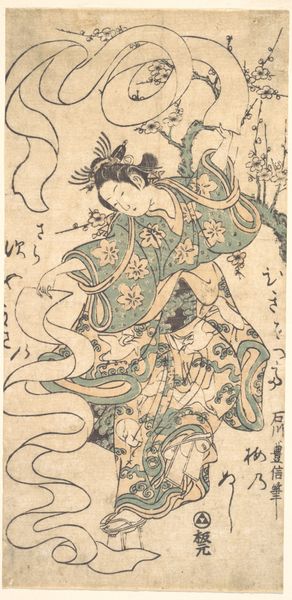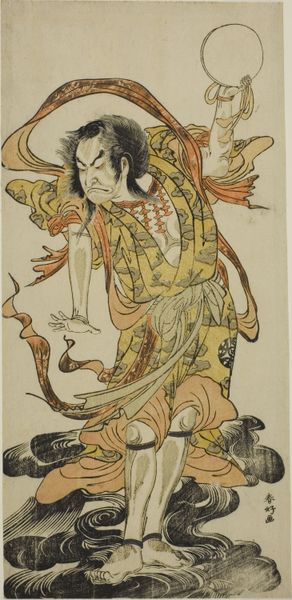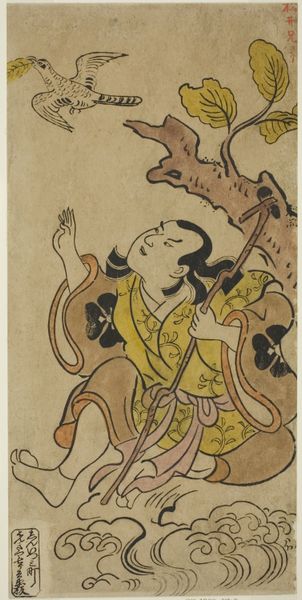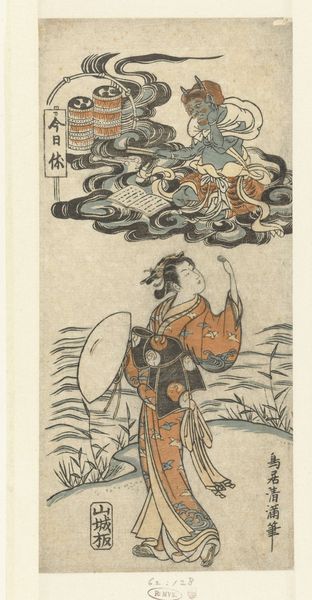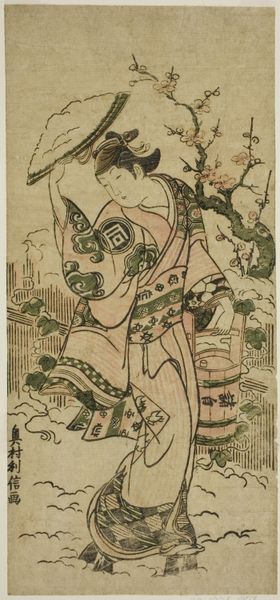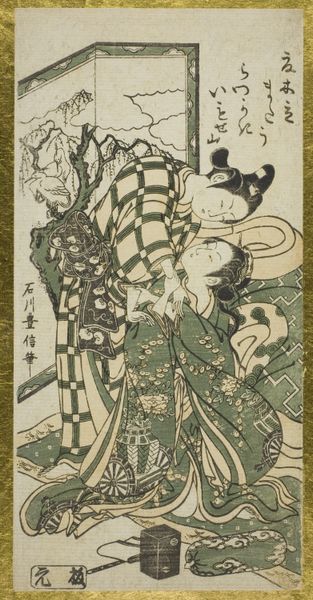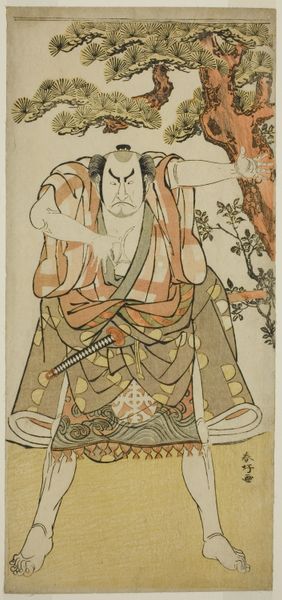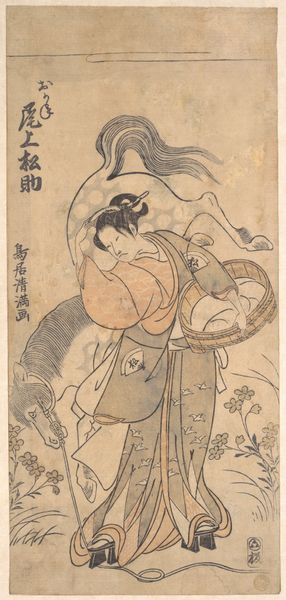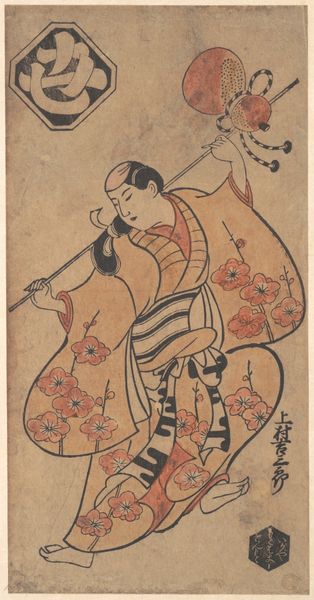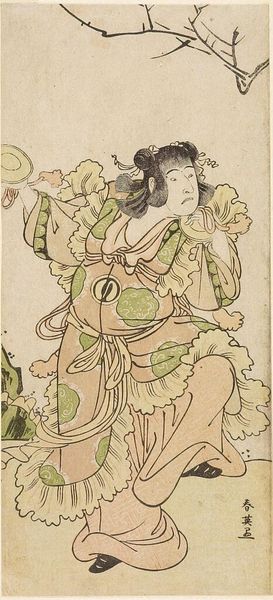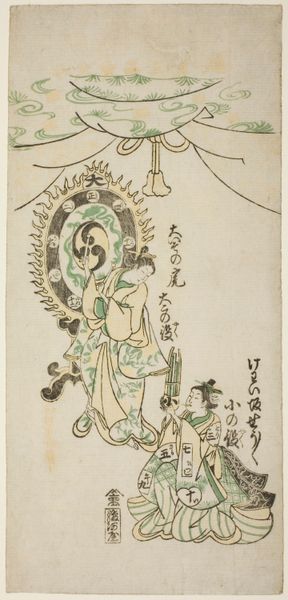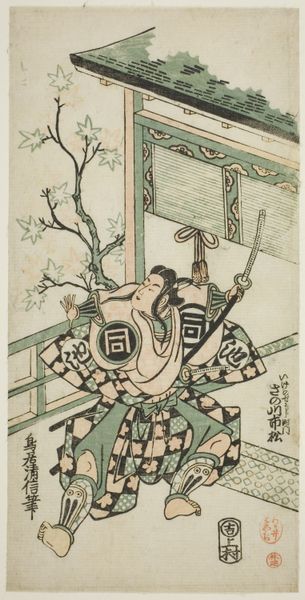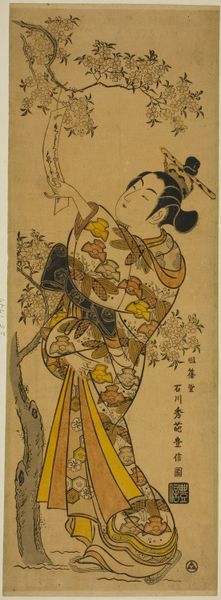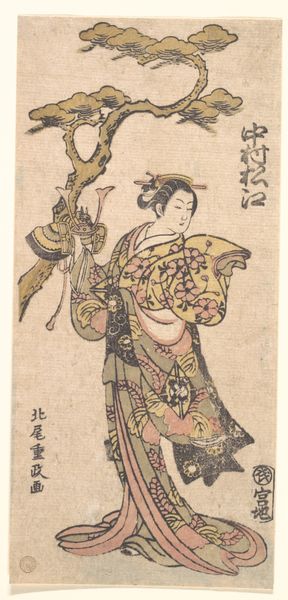
Susano-o no Mikoto Killing the Eight-headed Dragon 1748
print, woodblock-print
narrative-art
pen sketch
asian-art
ukiyo-e
figuration
woodblock-print
history-painting
Dimensions: 31.9 × 4.7 cm
Copyright: Public Domain
Editor: So, this woodblock print from 1748, by Torii Kiyomasu II, depicts ‘Susano-o no Mikoto Killing the Eight-headed Dragon.’ It feels… intense! The hero’s about to strike this crazy, multi-headed dragon, and the whole scene’s awash in swirling water and these sake barrels. What strikes you most when you look at this work? Curator: The energy, definitely. It's like a visual explosion, a chaotic ballet of hero versus monster, rendered with a dynamic, almost cartoonish flair, wouldn't you say? This isn't just a depiction of a legend; it's a raw, visceral representation of power and struggle. I find myself wondering, what does this legend, filtered through the artist's vision and rendered in ukiyo-e style, tell us about the Edo period's perception of heroism and the forces of nature? Editor: Cartoonish? That’s interesting. I was so focused on the drama; I didn’t really see it that way. And what's the deal with the sake barrels? They look so random. Curator: Ah, but nothing is random, my friend! Legend has it that Susano-o used those very barrels of sake to intoxicate the dragon, weakening it for the final blow. They're not just props, they’re key players in this dramatic showdown! Notice how Kiyomasu II uses those curvilinear lines to define them – it gives the entire composition this swirling movement. Do you feel like the color choices influence the overall mood? Editor: Totally, now that you mention it! That pale blue-green, almost ghostly, makes the scene feel both epic and eerie. Curator: Precisely! And that contrast is pure genius. Seeing this narrative unfold through the lens of Ukiyo-e… well, it reminds me that every artwork is not just an image, but a whole world of stories and emotions condensed onto a single surface. Editor: I get that. Thanks to you, I see way more than just a dragon-slaying scene. Now it’s about Japanese legends, artistic style and the meaning behind every element!
Comments
No comments
Be the first to comment and join the conversation on the ultimate creative platform.
